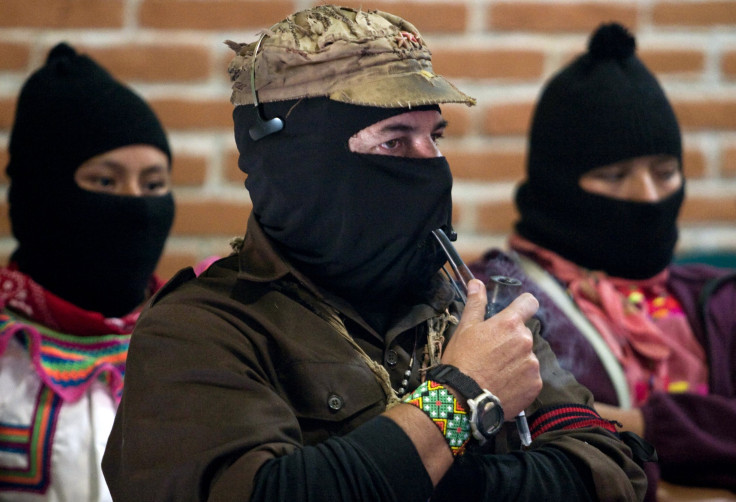
Subcomandante Marcos, who became the face of Mexico’s Zapatista Army of National Liberation (EZLN) following their 1994 uprising in the southern state of Chiapas, announced he was stepping down as spokesman on Saturday and declared the end of a personage which had become a “distraction” from the army’s cause. The announcement came during a public tribute to Zapatista leader José Luis Solís López, or Subcomandante Galeano, a schoolteacher who the group alleges was shot to death in early May.
Before a crowd of what Animal Politico describes as several thousand Zapatista supporters and media in the community of La Realidad, Marcos said that internal changes within Zapatista communities – namely, the ascendance of younger residents to positions of power – and not health problems had occasioned his resignation as spokesman. “The relief of command is not happening because of sickness or death, nor as an internal displacement or purging…I am not nor have I been sick, I am not nor have I been dead.”
In homage to his murdered colleague, he said, the next spokesperson for the Zapatistas would be known as “Galeano”. He added that he and other leaders had made the “collective decision” to dissolve what he described as an image built up by outside media. “Accustomed to look down at the indigenous from above, they would not raise their gaze to see us…their gaze stopped at the first mestizo they saw with a balaclava,” he said. “Indigenous wisdom challenged modernity in one of its bastions: the media. The construction of the personage called ‘Marcos’ began there.”
© 2025 Latin Times. All rights reserved. Do not reproduce without permission.




